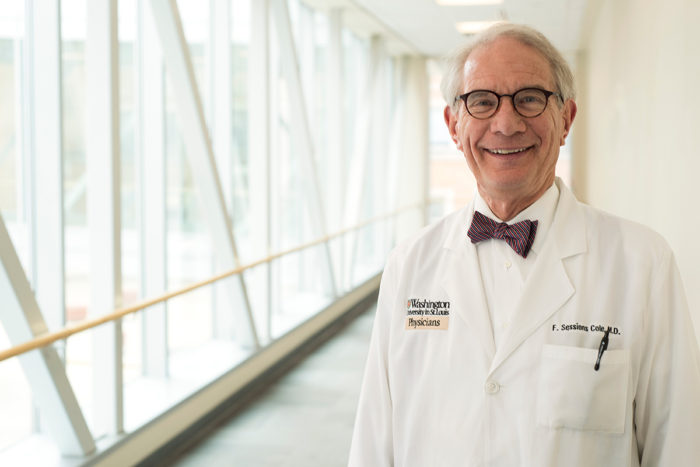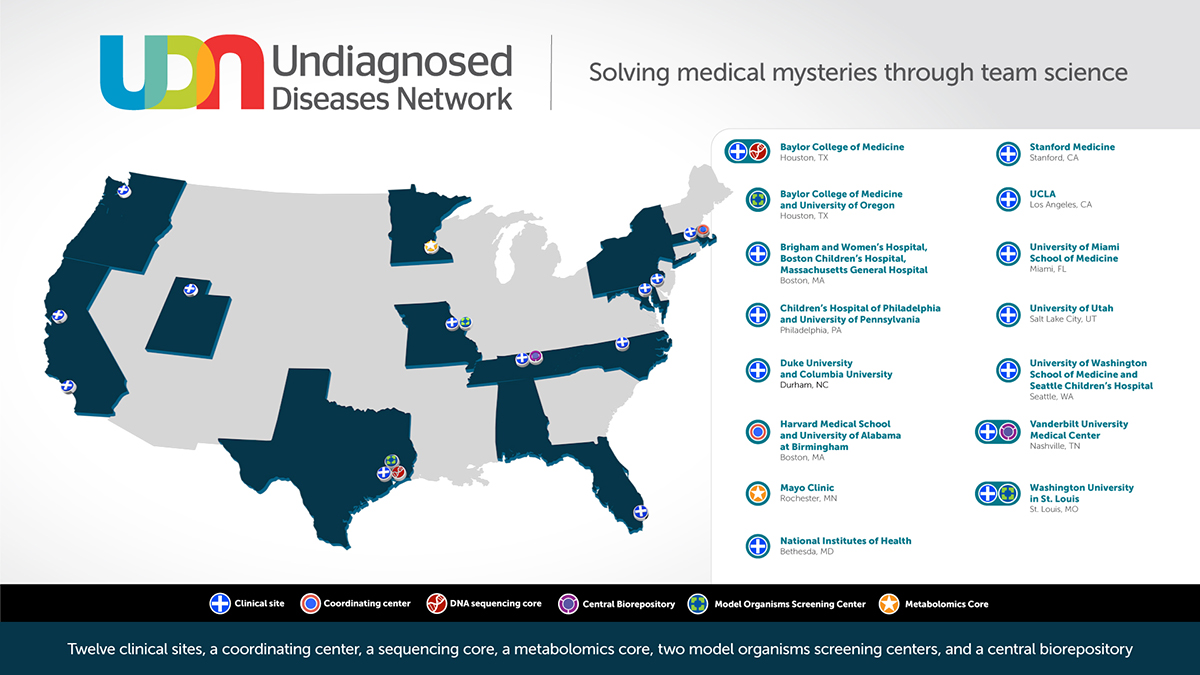Washington University joins network for solving rare medical mysteries
Undiagnosed diseases network seeks to explain medical conditions with no known cause
 Washington University School of Medicine
Washington University School of MedicineF. Sessions Cole, MD, will lead the Washington University School of Medicine clinical site at St. Louis Children's Hospital that is joining the Undiagnosed Diseases Network, funded by the National Institutes of Health (NIH). The network is focused on solving rare medical mysteries.
Washington University School of Medicine in St. Louis is joining a national research network aimed at diagnosing rare, previously undescribed diseases in patients whose conditions present as medical mysteries. The Undiagnosed Diseases Network is made up of 12 clinical sites and several research centers across the country and funded by the National Institutes of Health (NIH).
St. Louis Children’s Hospital and Barnes-Jewish Hospital, where Washington University physicians treat pediatric and adult patients, will serve as clinical sites for patients with undiagnosed diseases. Washington University School of Medicine also will serve as a site for developing models of rare diseases in zebrafish and roundworms. Both animals serve as good laboratory models because their externally developing embryos are transparent, allowing scientists to easily study their development.
The national network formed in 2015 and since then has diagnosed about 200 cases – a first step toward developing treatments. For example, the network recently discovered a new genetic disease that causes episodic lethargy and metabolic problems in adults and a new disease that leads to neurodevelopmental deterioration, causing an abnormal gait and hyperactivity in children.
 Related: Undiagnosed Diseases Network seeks to explain mysterious conditions
Related: Undiagnosed Diseases Network seeks to explain mysterious conditions
Millions of Americans live with rare diseases that sometimes require years to diagnose
“The success of the program so far demonstrates the importance of this research network for patients and their families, who often have long had no answers about the causes of their diseases,” said principal investigator F. Sessions Cole, MD, the Park J. White MD Professor of Pediatrics and director of the Division of Newborn Medicine at Washington University. “We are looking for patients with symptoms or problems that don’t fit into known diseases and for some indication that their conditions are inherited.”
The research network combines the expertise of doctors who treat patients, geneticists who sequence and analyze DNA, and scientists who study the underlying biology of diseases in animal models. The NIH will fund Washington University’s clinical and research programs with about $4.5 million over four years, with a total commitment of $100 million to all institutions over the same period.
“We have experience and knowledge across this research network that could allow doctors and scientists to work together to identify the origins of these medical mysteries,” said Cole, who is also the chief medical officer at St. Louis Children’s Hospital. “The basic idea is that the research team will take the genetic abnormalities that we suspect are responsible for the disease and put them into the animal model so we can study the consequences and understand the disease mechanisms in our patients.”
Adult patients and the parents or guardians of pediatric patients can volunteer for the program through an online application process. With permission, a team of scientists and doctors will examine each patient’s medical records to select cases for the program. Based on medical records, including symptoms, lab test results, scans and biopsies, and genome sequencing, for example, teams of researchers and bioinformatics specialists will identify genes and mutations likely to be involved in the mystery disorders and refer information to the laboratory scientists so they can study the conditions in animal models.
At Washington University, Lilianna Solnica-Krezel, PhD, the Alan A. and Edith L. Wolff Distinguished Professor of Developmental Biology, and Tim B. Schedl, PhD, a professor of genetics, will lead the zebrafish and roundworm model organism screening centers, respectively. Another research center, at Baylor College of Medicine, includes fruit flies as a third possible animal model resource.
“Zebrafish and roundworms can be powerful models of human disease,” said Solnica-Krezel, also the head of the Department of Developmental Biology at Washington University. “They share many of the same genes with humans. If we know what genes are mutated in a patient, we can engineer into zebrafish or another animal model these same mutations and study their effects in detail.”
While the project is now focused on diagnosis, the knowledge gained will help build tools that could allow scientists in the future to use the same model organisms to test potential drug treatments for these disorders.
“For now, we’re connecting diseases to genes, which is a bit like looking for a needle in a haystack — or even a specific needle in a stack of needles,” Solnica-Krezel said. “But by recreating rare diseases in model organisms, we have a much better chance of pinpointing the specific needle that’s responsible for a given mystery disease.”
The other members of the network, both clinical and research centers, are Baylor College of Medicine with the University of Oregon; Brigham and Women’s Hospital, Boston Children’s Hospital and Massachusetts General Hospital at Harvard Medical School; Duke University with Columbia University; Harvard University; Stanford Medicine; the University of California, Los Angeles; the Mayo Clinic; Vanderbilt University Medical Center, the University of Washington School of Medicine and Seattle Children’s Hospital; Children’s Hospital of Philadelphia and the University of Pennsylvania; the University of Miami School of Medicine; the University of Utah; and the NIH.
The Undiagnosed Diseases Network awards are administered by the National Human Genome Research Institute, the National Center for Advancing Translational Sciences and the National Institute of Neurological Disorders and Stroke, all of the NIH.
For information about the application process, visit the network website.
 Ernesto del Aguila, National Human Genome Research Institute, NIH
Ernesto del Aguila, National Human Genome Research Institute, NIH





